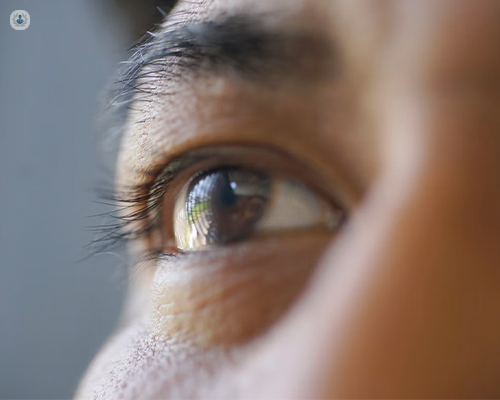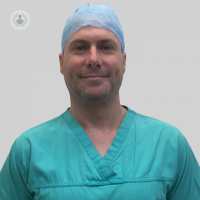What happens as cataracts develop?
Escrito por:Cataracts are a common eye condition in which the natural lens of the eye becomes cloudy, leading to impaired vision. This condition typically develops slowly over time, often as a result of aging, and can affect one or both eyes.
While cataracts are most commonly associated with older adults, they can also occur due to other factors such as injury, certain medical conditions, or prolonged exposure to ultraviolet (UV) radiation. Here to explain more is highly esteemed consultant ophthalmologist, Mr Craig Goldsmith.

What happens as cataracts develop?
The lens of the eye is a clear structure that helps focus light onto the retina, allowing for sharp vision. As cataracts develop, proteins in the lens break down and clump together, creating cloudy areas that block or scatter light, making it difficult for the eye to focus.
This results in symptoms such as blurry or dim vision, increased sensitivity to light, difficulty seeing at night, and seeing haloes around lights. Colours may also appear faded or yellowed.
Are cataracts treatable?
While cataracts can affect daily activities, such as reading, driving, or recognising faces, the condition is highly treatable. In the early stages, stronger glasses or improved lighting may help manage symptoms. However, as cataracts progress and vision deteriorates, cataract surgery is often recommended.
Cataract surgery is a safe and effective procedure in which the cloudy lens is removed and replaced with an artificial intraocular lens (IOL). The surgery is usually performed on an outpatient basis and involves minimal recovery time.
Most patients experience a significant improvement in vision within days after the surgery. In fact, cataract surgery is one of the most commonly performed and successful surgeries worldwide, with millions of people regaining clear vision each year.
Preventive measures can help slow the progression of cataracts. Wearing sunglasses to protect against UV radiation, maintaining a healthy diet rich in antioxidants, and managing medical conditions like diabetes can all reduce the risk of cataracts.


